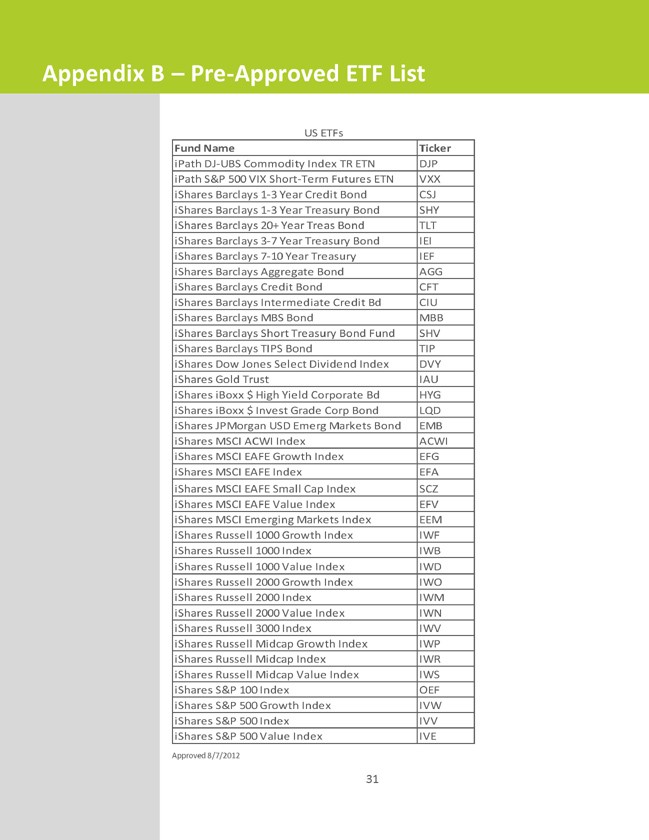Income Generating ETFs To Add To Your Portfolio (PFF MBB NLY CMO LQD CSJ VCSH)
Post on: 12 Май, 2015 No Comment

There is a curious conundrum for many income-oriented investors. Income investing is a generally conservative approach, but it can be difficult to find a cost-effective way to obtain a level of diversification that minimizes single-stock risk. Although there are all manner of stocks, bonds, preferred stocks and funds that can offer investors solid yields, investors may want to consider ETF-based income options as a way of securing both income and diversification in a cost-effective way.
Tutorial: An In-Depth Look At ETFs
A Quick Run-Down on ETFs
ETFs can be thought of as a hybrid investment vehicle that blends together aspects of mutual funds and closed-end funds. Like closed-end funds, ETFs trade continuously on exchanges throughout the day and the price is updated continually. ETFs can also be bought on margin and held in a variety of retirement accounts. Unlike closed-end funds, ETFs seldom trade at a significant premium or discount to the fund’s net asset value (NAV), they are less vulnerable to style drift, and they often have a lower expense ratio as well.
Preferred ETFs
Preferred stocks are an underappreciated asset class, but investors may find the array of terms and conditions to be too much trouble. Likewise, there is that risk of picking a single company’s stock and having bad luck ruin the expected returns. (For more, see Prefer Dividends? Why Not Look At Preferred Stock? )
The iShares S&P US Preferred Stock Fund (NYSE:PFF ) gives investors a one-shot investment option. PFF holds more than 200 different preferred stocks and offers a relatively low 0.48% expense ratio, while offering a yield of nearly 7.4%.
The PowerShares Preferred Portfolio (NYSE:PGX ) likewise offers convenient diversification (68 holdings here) and an appealing yield of 6.7%. The expense ratio is about 0.5% and while the stock is not quite as liquid as PFF, it is a solid option. Banks and financial companies comprise a very large percentage of the portfolio (as they do for PFF), but that is par for the course in an asset class where financial companies dominate the issuers’ pool.
Mortgage-Backed ETFs
There are so few ETFs specializing in mortgage-backed securities that it hardly seems right to call it a category. Be that as it may, iShares MBS Bond Fund (NYSE:MBB ) offers investors an alternative to mortgage REITS (also called M-REITs) like Annaly Capital (NYSE:NLY ) or Capstead (NYSE:CMO ). The iShares MBS Bond Fund holds 50 securities and currently offers a yield of 3.4% with an expense ratio of 0.25%. The Vanguard Mortgage-Backed Securities ETF (Nasdaq:VMBS ) offers a significantly lower expense ratio (0.15%), but a lower yield and much lower liquidity (in terms of average daily trading volume). (Learn more in Profit From Mortgage Debt With MBS .)
Investors may ask why these ETFs offer such low yields when many (if not most) M-REITs post yields in the low teens. The answer by and large comes down to leverage. M-REITs use extensive leverage in their operations and that magnifies their returns to a considerable degree. That is fine for investors who can take on the risk that represents, but less advanced investors should remember that leverage works both ways — significantly improving the returns of good picks, but also hammering returns when the picks go south.
Corporate Bond ETFs
Relative to the government bond sector, corporate bonds are an interesting asset class right now. Corporate balance sheets are in fairly good shape and interest coverage is looking pretty good as the economy recovers. Once again, though, individual investors may find that the individual securities are too much work to evaluate and hold.
There are several sizable corporate bond ETFs. In terms of market cap, iShares Investment Grade Corporate Bond Fund (NYSE:LQD ) is the largest. This fund holds more than 500 different bonds and charges an expense ratio of only 0.15%. The adjusted duration of the portfolio presently stands at 7.4 years and the fund offers a yield of 4.9%. (For more, see An Introduction To Corporate Bond ETFs .)
The iShares 1-3 Year Credit Bond Fund (NYSE:CSJ ) is likewise committed to corporate bonds, but the duration is much lower (1.97 years) and that should mitigate some of the price risk if interest rates rise. CSJ offers a comparable level of diversification and a low expense ratio (0.2%), but the lower duration comes at the cost of lower yield — 2.4% in this case.
Investors looking at the shorter end of the range may also consider the Vanguard Short-Term Corporate Bond ETF (Nasdaq:VCSH ). This fund offers a low expense ratio (0.15%), a similar yield (2.3%) and a higher duration at 2.8 years.
The Bottom Line
Investors should not dismiss mutual funds out of hand, as there are many talented management teams that can offer superior performance at reasonable prices. What’s more, active managers with broad mandates can apply their own experience and expertise and move among asset classes as circumstances warrant.
That said, ETFs have an undeniable place in the catalog of investment options and investors should keep them in mind. By offering solid diversification at a low cost, ETFs can be an invaluable tool in accessing attractive income-generating assets with a more manageable level of risk and due diligence. (For more, see Ratcheting Up The Income In Your Portfolio .)
Use the Investopedia Stock Simulator to trade the stocks mentioned in this stock analysis, risk free!














